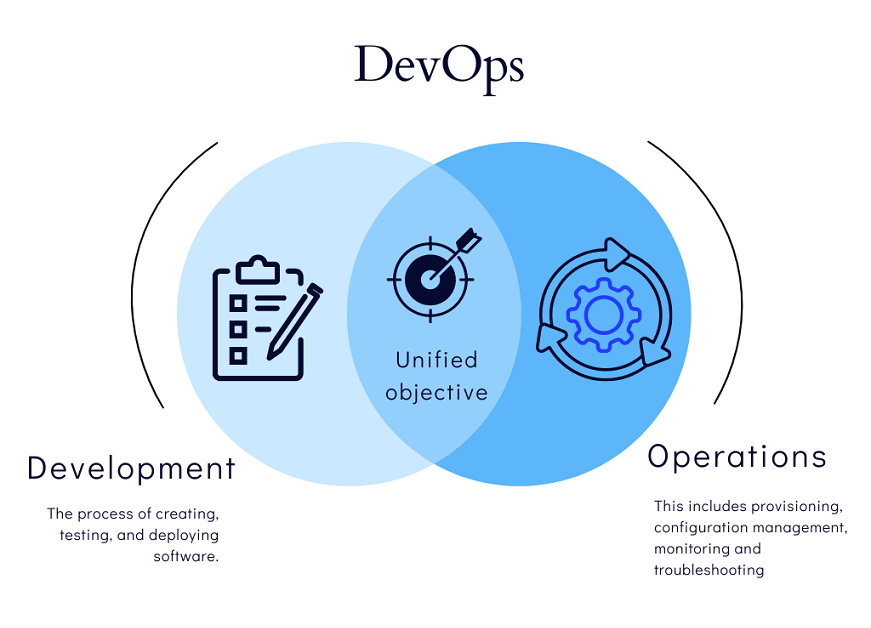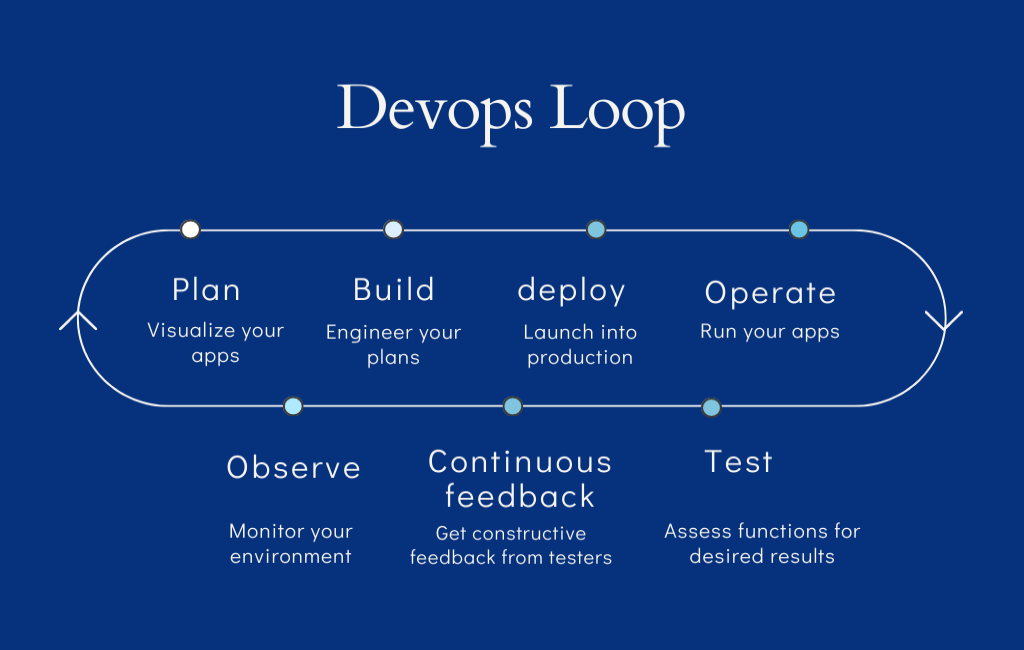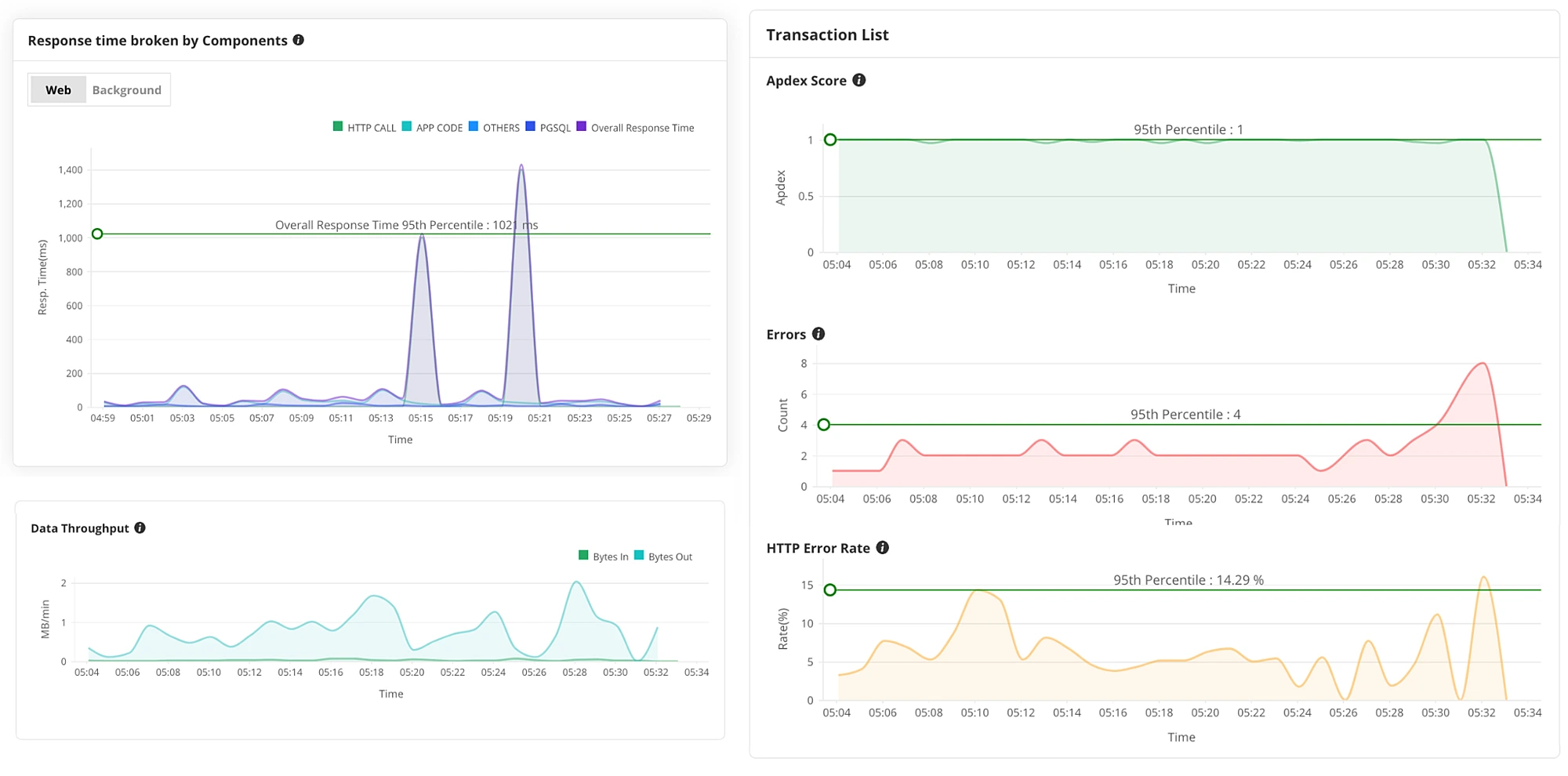Faster delivery
DevOps can help organizations to deliver new software and updates faster. This gives them an edge in the marketplace.
DevOps is a set of practices that fuses software development (Dev) and IT operations (Ops) to shorten the application development cycle and ensure continuous delivery with high software quality. By adopting DevOps practices, you can help your organization to deliver software more reliably, quickly, and efficiently.
DevOps is an approach to software development that prioritizes collaboration, communication, automation, and continuous improvement with the help of faster feedback loops for more frequent delivery of updates and features. Here, the flow of information and work runs different directions as opposed to the traditional singular direction in the classic waterfall model of the Software Delivery Life Cycle (SDLC). The DevOps model helps organizations to break down silos between development and operations teams, streamline the software development process, and deliver software faster and with higher quality.
DevOps practices include continuous integration, continuous delivery, and continuous deployment, which are automated processes that help teams deliver code changes more frequently and reliably. DevOps methodologies generally emphasize the use of infrastructure as code where managing infrastructure through code instead of manual processes, monitoring and logging are essential for identifying and resolving issues quickly.
One can define DevOps in simple terms as the marriage of development (Dev) and operations (Ops) teams. It has evolved from early proposals to its current state, where it is recognized as a crucial methodology for organizations seeking to improve their software development processes and deliver better software products.

The history of DevOps can be traced back to the late 2000s when IT operations and software development communities recognized a gap which served as a major disadvantage between the development and operations teams. Before its inception, the development and Ops teams had separate goals, leadership and therefore, an entirely different approach when it came to testing applications and judging performance. During this time, plans to combine software development methodologies with deployment and operations concepts were put forth. These proposals laid the foundation for what would become known as DevOps, which gained wide popularity since 2008, when it was publicly made known. Subsequently, large companies such as Amazon, Netflix, Target, and Adobe have embraced the DevOps methodology that largely contributes to their prevailing success.
The goal of DevOps is to provide a culture of collaboration and communication between software development teams and IT operations teams, enabling organizations to deliver software faster, with greater efficiency and quality, and with reduced time to market. It encourages automation and continuous improvement to ensure that code changes can be tested and deployed quickly and reliably.
Faster delivery
DevOps can help organizations to deliver new software and updates faster. This gives them an edge in the marketplace.
Reduced costs
DevOps can help to reduce costs by streamlining the software delivery process and eliminating waste.
Improved quality
DevOps can help to improve the quality of software by catching bugs early in the development process. This can lead to fewer customer support issues and increased customer satisfaction.
Better collaboration and communication
DevOps focuses on breaking down silos between development and operations teams. By promoting a culture of collaboration and communication, DevOps helps to align teams towards common goals, improving morale and reducing frustration.
Managing source code is the foremost practice that is implemented irrespective of DevOps adoption. Git is a widely used distributed version control system that helps teams manage code changes, merge source code, and track versions.
In addition to source code management, the DevOps process involves the implementation of four key concepts for effective and efficient delivery of applications. These key concepts and the tools to achieve them are:
A DevOps pipeline for continuous delivery and integration typically consists of several stages that help automate the process of building, testing, and deploying software.

DevOps monitoring is crucial for effective management and control of applications. It involves tracking and measuring the performance and health of systems and applications to identify and address issues early on. By continuously monitoring, potential threats and vulnerabilities can be detected and mitigated. It helps ensure the timely delivery of code without introducing vulnerabilities, provides visibility into complex systems, and improves insight and control over operations.
Monitoring plays a vital role in DevOps management as it also helps establish baselines for key performance indicators and facilitates the analysis of trends and recognition of anomalies. Utilizing the right DevOps platform is essential in optimizing the software development process. For instance, Applications Manager's DevOps monitoring tool keeps track of the application development and operation cycles, enabling the identification and resolution of potential issues before they impact the system.

As the world becomes increasingly digital, the demand for organizations that can deliver software quickly and reliably will only grow. DevOps is well-positioned to meet this demand, as it offers a number of benefits that can help businesses to improve their software delivery process.
Some of the key trends that are shaping the future of DevOps include:
DevOps has a transformative impact on businesses by enabling faster delivery, improved collaboration, enhanced software quality, increased efficiency, and better customer satisfaction. By adopting best DevOps practices, businesses can expect to achieve faster, more efficient software development, improved collaboration between teams, and ultimately, better business outcomes.
Get started now by downloading our 30-day free trial to experience all the features of our DevOps monitoring solution or schedule a personalized demo for a guided tour.

It allows us to track crucial metrics such as response times, resource utilization, error rates, and transaction performance. The real-time monitoring alerts promptly notify us of any issues or anomalies, enabling us to take immediate action.
Reviewer Role: Research and Development